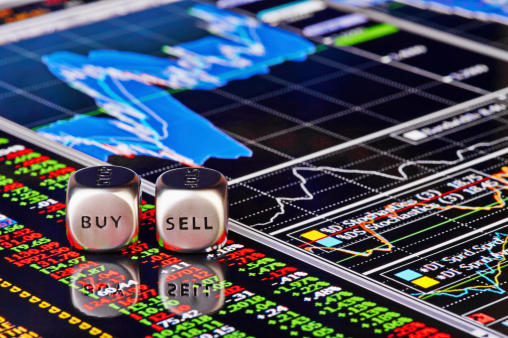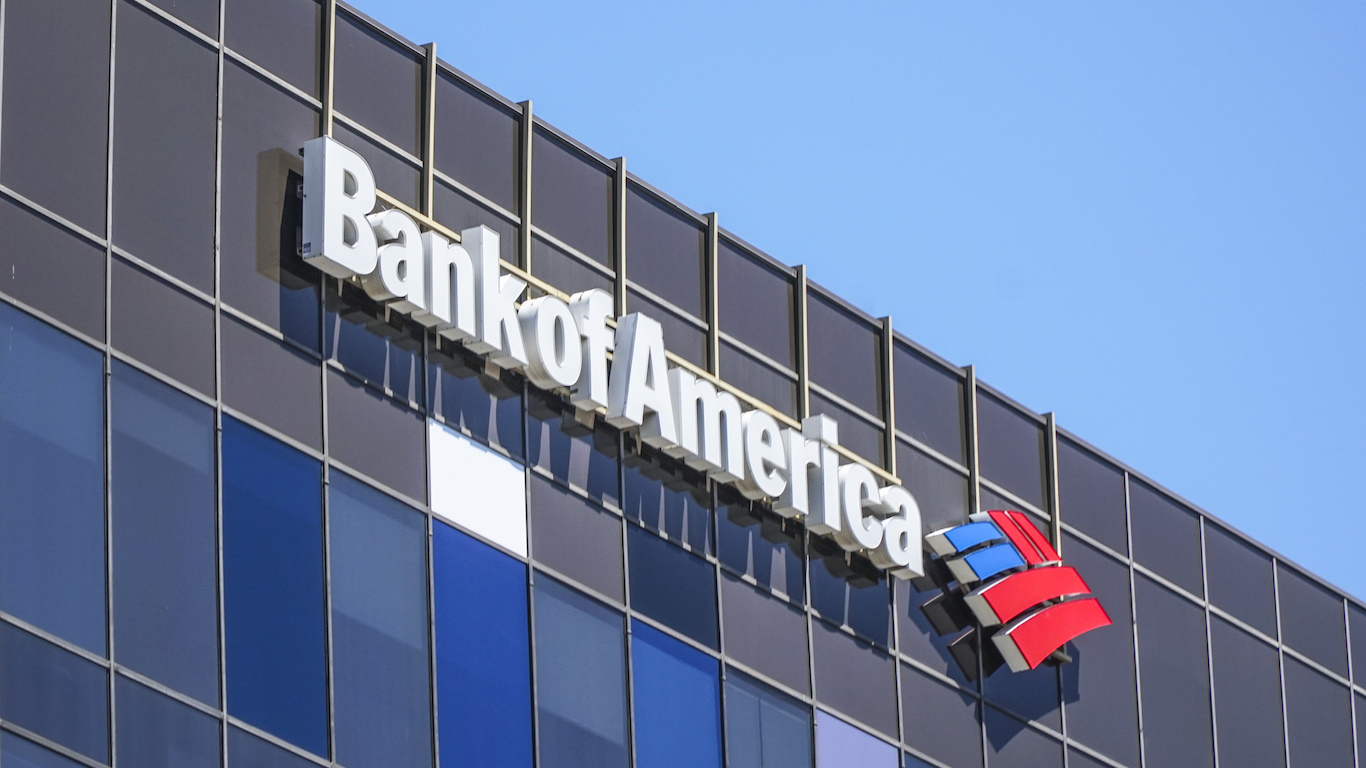The S&P 500 posted a new record at 1,854, a rise of more than 150% from the bottom caused by the 2009 recession market plunge. Some experts believe the index has risen too much, because the increase has little support from the general economy and corporate earnings. While that may be true, a few large cap stocks have been large contributors to the increase, and a sudden weakness of a few of these would cause a sharp correction.
1. AT&T Inc. (NYSE: T) stands as a proxy for America’s large telecom companies, wireless carriers and cable and fiber to the home businesses. Like its major rival Verizon Communications Inc. (NYSE: VZ), AT&T’s landline business is collapsing, and that has been offset by a rise in cellular subscribers. It has made a large incursion into broadband businesses that provide television delivery to the home, which puts it up against cable and satellite TV companies. AT&T faces two acute problems. The first is a price war in the wireless industry, which is the most critical portion of AT&T’s profits. Data plan fees charged to its customers were supposed to make its wireless business more profitable. Competition has killed that likelihood for now. In the broadband to the home business, AT&T is caught in the same “net neutrality” trap as cable providers. Companies, led by Netflix Inc. (NASDAQ: NFLX), are crowding AT&T’s delivery system with large files, and they do not pay for that carriage, at least for the time being. AT&T’s prospects could be undermined, and its stock price hurt, if it profitability is harmed by wireless or home delivery of programming.
2. Oracle Corp. (NASDAQ: ORCL) remains among the dominant providers of software to huge companies and enterprises. It has competition that ranges from Microsoft Corp. (NASDAQ: MSFT) to smaller rivals led by Salesforce.com Inc. (NYSE: CRM). Oracle’s future will be decided largely by the demand for IT by companies that are not only the largest worldwide, but also those that employ tens of millions of workers. While Oracle has been helped by the recovery of earnings at its customers over the past two years, it is vulnerable to a slowing economy, which could cause caution among them. That would force them to slow their IT upgrade cycles. And Oracle is in the middle of the global migration to cloud computing, which most experts believe will cut corporate IT expenditures substantially. Even if the economy stays strong, Oracle’s profits could be eroded by the new advance in technology.
3. Apple Inc. (NASDAQ: AAPL) may be the largest company in the world by market cap, but its lead has dwindled quickly as its share price has been damaged by a lack of new products and competition — primarily from Samsung. Apple’s fortunes depend on two trends, each of which Apple has not been able to turn to its advantage. The first is that the cycle of substantial innovation in its products — primarily the iPhone and iPad — has slowed, or even stopped. Consumers can no longer count on large advances in the features of smartphones and tablets. This should trigger people to hold on to their current products for longer. Samsung, which was barely an Apple competitor five years ago, has taken the global lead in smartphone sales, largely because of its Galaxy line. And that Galaxy line is powered by the Android OS created by Google Inc. (NASDAQ: GOOG). Apple’s rivalry with Samsung has moved to the courts, as it has taken up patent battles in many of the world’s largest countries. It would only have to lose a few of these lawsuits to have the uniqueness of some of its products to disappear.
4. Procter & Gamble Co. (NYSE: PG), based on its sales and the ubiquity of its consumer products around the world, is among the best barometers of consumer spending. P&G’s margins depend to a large extent on the cost of the ingredients that go into its products and the value of the dollar. P&G’s earnings have been poor recently. Some of this can be explained by competition from the world’s other huge consumer products companies. However, part is due to a lack of a worldwide economic recovery, which, in turn, has cause consumers to remain cautious. P&G faces the innovation problem, not terribly different from the way consumer electronics companies do. From its shampoos to razors and toothbrushes, new product features drive future sales. As much as any public corporation in the world, P&G relies on huge marketing budgets, which have risen into the billions of dollars worldwide. These expenditures are not only large, their effectiveness can vary from wildly successful to ineffective.
5. General Electric Co. (NYSE: GE) has exposure across large portions of the global economy because of the breadth of its products. Its infrastructure business relies on the financial health of governments and corporations, its transportation business on the prospects of aviation and rail demand, its medical supply business on the health of health care industry, and its consumer business on the health of the consumer economy. All of these have exposure to every major economy in the world. GE faces the “innovation” problem as much as any huge public company. It is not an accident that “innovation at work” is the way GE defines itself to its own employees, customers and Wall Street. GE mostly has been considered a failure over the past several years, primarily, it says, because of unevenness in the global economy. This is only partially true. GE has hundreds of competitors spread across its dozens of businesses. If it loses revenue to many of these, its revenue and margins will be under the sort of pressure that has hurt it for a decade.
Because the S&P 500 is weighted by market cap, not many companies would need to be in trouble to drag it down.
Are You Ahead, or Behind on Retirement? (sponsor)
If you’re one of the over 4 Million Americans set to retire this year, you may want to pay attention.
Finding a financial advisor who puts your interest first can be the difference between a rich retirement and barely getting by, and today it’s easier than ever. SmartAsset’s free tool matches you with up to three fiduciary financial advisors that serve your area in minutes. Each advisor has been carefully vetted, and must act in your best interests. Start your search now.
Don’t waste another minute; get started right here and help your retirement dreams become a retirement reality.
Thank you for reading! Have some feedback for us?
Contact the 24/7 Wall St. editorial team.





